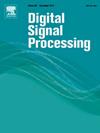基于双通道模型的夹套平台损伤识别方法
IF 2.9
3区 工程技术
Q2 ENGINEERING, ELECTRICAL & ELECTRONIC
引用次数: 0
摘要
为解决夹套平台振动信号噪声大、时间序列数据利用率低等难题,本文提出了一种并行集成时序卷积网络(TCN)和门控递归单元(GRU)的双通道损伤检测方法。采用多头注意机制(MA)重新分配特征权重,提高了检测精度。使用 Concatenate 函数将优化后的特征融合为最终输出。设计了两个实验场景--隔离噪声和海洋噪声--来评估该方法。结果表明,TCN、GRU 和 MA 的组合能有效检测海上平台的损坏情况,超过了其他深度学习模型。虽然该方法在实际应用中显示出强大的潜力,但还需要在更复杂的海洋环境中进行进一步测试,以解决在处理高度多变的噪声模式时可能存在的局限性。本文章由计算机程序翻译,如有差异,请以英文原文为准。
Damage identification method for jacket platform based on dual-channel model
To address the challenges posed by noisy vibration signals and underutilized time-series data in jacket platforms, this paper proposes a dual-channel damage detection method that integrates Temporal Convolutional Networks (TCN) and Gated Recurrent Units (GRU) in parallel. A multi-head attention mechanism (MA) is employed to reassign feature weights, improving detection accuracy. The optimized features are fused using the Concatenate function for the final output. Two experimental scenarios—isolated noise and ocean noise—were designed to evaluate the method. The results demonstrate that the combination of TCN, GRU and MA effectively detects damage in offshore platforms, surpassing other deep learning models. Although the method shows strong potential for real-world applications, further testing in more complex ocean environments is required to address potential limitations in handling highly variable noise patterns.
求助全文
通过发布文献求助,成功后即可免费获取论文全文。
去求助
来源期刊

Digital Signal Processing
工程技术-工程:电子与电气
CiteScore
5.30
自引率
17.20%
发文量
435
审稿时长
66 days
期刊介绍:
Digital Signal Processing: A Review Journal is one of the oldest and most established journals in the field of signal processing yet it aims to be the most innovative. The Journal invites top quality research articles at the frontiers of research in all aspects of signal processing. Our objective is to provide a platform for the publication of ground-breaking research in signal processing with both academic and industrial appeal.
The journal has a special emphasis on statistical signal processing methodology such as Bayesian signal processing, and encourages articles on emerging applications of signal processing such as:
• big data• machine learning• internet of things• information security• systems biology and computational biology,• financial time series analysis,• autonomous vehicles,• quantum computing,• neuromorphic engineering,• human-computer interaction and intelligent user interfaces,• environmental signal processing,• geophysical signal processing including seismic signal processing,• chemioinformatics and bioinformatics,• audio, visual and performance arts,• disaster management and prevention,• renewable energy,
 求助内容:
求助内容: 应助结果提醒方式:
应助结果提醒方式:


